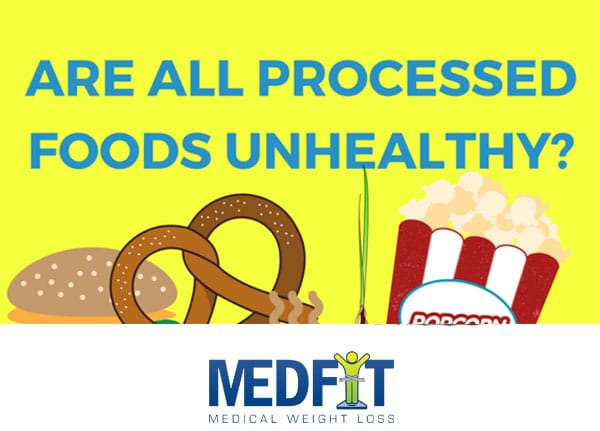 We often hear people talking about eliminating processed foods from their daily diet to opt for more whole foods. When we think of processed foods we often think about chips, candy, packaged snack foods, soda, or frozen foods that are easily made by microwaving. While these are indeed all processed foods, what actually constitutes a processed food may surprise you.
We often hear people talking about eliminating processed foods from their daily diet to opt for more whole foods. When we think of processed foods we often think about chips, candy, packaged snack foods, soda, or frozen foods that are easily made by microwaving. While these are indeed all processed foods, what actually constitutes a processed food may surprise you.
A processed food is any food that has been altered in any way from its original form to be made accessible to eat. There are varying levels of processed foods for us to consume, depending on how processed each food item is. You may be shocked to find that frozen fruits and vegetables, as well as bagged spinach are all considered minimally processed!
Minimally processed foods are foods that we often don’t think of as being classified as processed, and don’t require much alteration. These may be roasted nuts, roasted coffee beans, bagged spinach, and pre-cut vegetables.
Food processed at peak nutritional quality to enhance or preserve nutrients and freshness: Canned tuna, frozen fruits and vegetables, canned vegetables, jarred baby food.
Foods with added preservatives, oils, flavorings, sweeteners to improve taste and texture: Cake mixes, spice packets, dressings, sauces, jarred tomato sauce.
Ready-To-Eat foods for convenience allowing minimal preparation: Nut butters, crackers, fortified cereals, granola bars, rotisserie chicken, deli meat, juice, soda, yogurt, flavored oatmeal.
Highly processed foods that are packaged save time and freshness: Frozen pizza, frozen entrees, prepared deli food.
Does some of this surprise you at all? I don’t know about you, but it was a bit shocking to find that even frozen fruits and vegetables are considered processed! This is because when we hear people say that we need to cut out ALL processed foods, we mostly assume that they are going to eliminate frozen foods and “junk” like chips and candy.
The reality of it is that we can actually choose a “healthy” version of a processed food and still lose weight. This takes some homework on your part though! Nutrition labels are your best friend in this case, and the only way you will know what you are consuming. Some processed foods benefit us, especially when they are fortified to include vitamins and minerals that the original form of the food does not contain, such as milk fortified with vitamin D and fortified oatmeal and breakfast cereals. Meal replacements such as Optifast, which we use here in our programs, may or may not be a good choice depending on the nutritional components. Optifast offers 20% total nutrition per meal replacement, is backed by research, and therefore a good option considering level of processing. The same holds true for protein bars such as Quest, Pure Protein, and Premier Protein brands.
How do we look for hidden ingredients in processed foods to determine which ones are OK to consume?
Hidden Fat
Often times, fat is added not only for flavor but to also to increase the shelf time of the food. The fats that you want to pay attention to the most are trans fat and saturated fats, which many processed foods include. After multiple research studies came out about the negative effects of trans fats, we have seen a trend in a decline of this type of fat added to foods. However some foods do still contain trans fats, which we must be aware of by looking at nutrition labels.
Hidden and Added Sugars
Sugar is also added to increase the flavor of processed foods. Be extra-aware of added sugars when you see a label on the front of a package that says “fat free” or “low-fat”, because often-times there is added sugar to add more flavor to the food in the absence of the flavorful fat. An added sugar is a sugar that does not naturally occur in the food and therefore has been added. Sugar is one of those that you really need to not only inspect the nutrition facts label, but also the ingredient list!
Hidden Sodium
Did you know that the average American consumes about 3,400mg of sodium per day? If that sounds like a lot to you, it should since the safe upper limit for sodium per day is 2,300mg! To put things into perspective, this is 1 tsp of table salt! Processed foods are the main culprit to this added sodium intake per day, causing hypertension, water retention, etc. Again, we must look at the nutrition label to determine how much sodium a food contains. Canned foods tend to be on the higher end of sodium so look for low-sodium, no salt added, or reduced-sodium on the front of the package as well as inspection of the nutrition label.
Our nutritionists will walk you through the nutrition label and teach you all about how to find the right foods to eat to lose weight as well as keep the weight off. Call (303) 321-0023.
